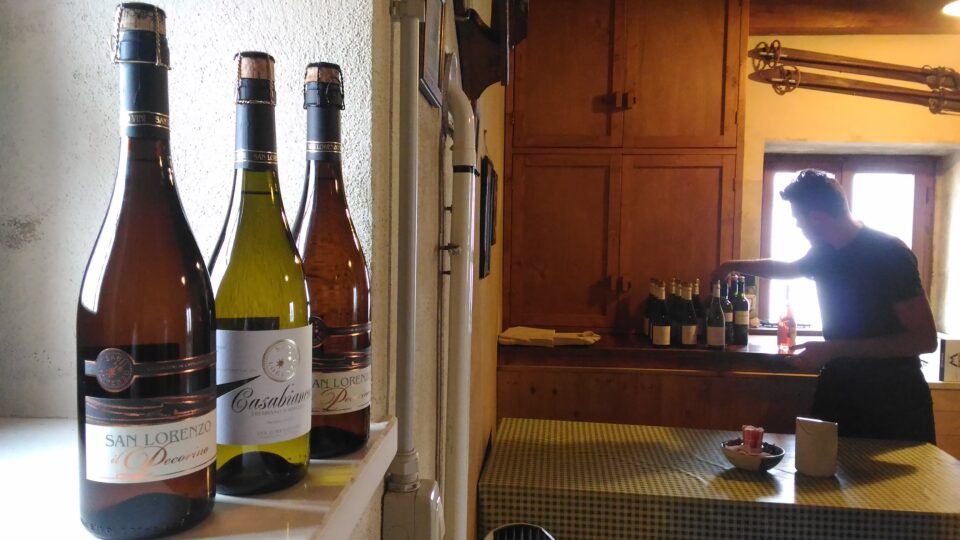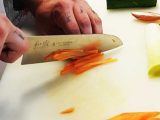Press review
Virtù Quotidiane February 23, 2023

(translated by Google)
A snowshoe hike surrounded by the pure white of the snow that covers the Gran Sasso to see the refinement stations up close where the wines rest silently. It was organized by Bruno Carpitella and Lorena Lucidi of Vini d'Altura, the refinement project at 2000 meters above sea level, conducted by the company Pendeche of Montorio al Vomano (Teramo).
From 25 November and until the thaw (between the end of May and the beginning of June), under a thick layer of pure white snow, about 900 bottles of wines from three very different wineries mature in a special wine cellar: the winery Cioti di Paterno, a hamlet of Campli (Teramo, Abruzzo), the Friulian Berto&Fiorella from Precenicco (Udine) and the Sicilian Calcagno from Passopisciaro (Catania) on the Mount Etna, who took part in the special excursion.
Winery Cioti has chosen to refine at altitude an orange 2021 (macerated with Malvasia grapes) and White 2021 (from Lureo grapes, the unknown vine recovered from the Cioti family); the Sicilian Etna Bianco 2021 (from Carricante grapes) and Etna Rosso 2020 (Nerello Mascalese and Cappuccio) and finally the Friulian Pinot Grigio 2021 and Bianco Friulano 2021 (a resistant clone).
“We have selected three wineries – Carpitella tells Virtu Quotidiane -. They are three family businesses, from three completely different territories and philosophies that come together in this common exercise of refining at altitude that gives life to very different products. With them we are thinking we are giving birth to an innovative business network formula, which combines method of refinement, research and experiential tourism".
With the snowshoe hike that took place last Saturday, the winemakers were able to discover up close the cellar that houses their wines, for this almost magical transformation. Arriving in Campo Imperatore with the cable car, the group, together with the Gran Sasso ski school, headed on snowshoes to the plain to reach the refining station in an hour.
At Le Fontari Refuge the producers were welcomed with an aperitif with the presentation of another product aged at high altitude, the Genziana Transumante, liqueur created in collaboration with Paesani, based on Trebbiano d'Abruzzo, to then close at the Campo Imperatore hostel with a lunch in combination with Vini d'Altura refined in recent seasons: Spumante Brut 2017 (Trebbiano), Trebbiano Doc Abruzzo 2017, Spumante Brut Rosa 2018 (Montepulciano, Sangiovese and Merlot), Cerasuolo d'Abruzzo Doc 2019, made in collaboration with Biagi; Bianco Igt Colli Aprutini 2019 made in collaboration with Cioti; and Etna Doc Rosso 2019 in collaboration with Calcagno (...)
At the Ostello Campo Imperatore the bottles aged at altitude, paired with the dishes of Niko Romito's students
Virtù Quotidiane June 20, 2022

(translated by Google)
A bet, as often happens, won on the field by overcoming the initial skepticisms. Thus were born the Vini d'Altura of Biagi, the winery located in Colonnella (Teramo) which six years ago indulged the ambitions of Bruno Carpitella and Lorena Lucidi to have a handful of bottles aged at altitude. The result was surprising and today from a very modest amount we have reached 2,400 units from six companies from all over Italy.
Sunday at the Ostello Campo Imperatore an exclusive appointment, led by Serena Specchi of Decanter Academy, made known to the public the extraordinary organoleptic qualities of wines that are transported to high altitudes at the first big snowfall, remain there until the thaw and the year later they are put on the market: Carpitella has made them a brand in all respects, Vini d'Altura, which distinguishes them from many wines produced at high altitudes, examples of heroic viticulture.
A Gala Lunch prepared by the students of the 17th course of the Niko Romito Academy and a Comparative Masterclass – conducted by the Master Sommelier Alma Filippo Fratini – which offered the opportunity to analyze the transformations that occur in wines after refinement, concluded a three days which started on Friday with excursions and tastings of Altura wines from various Italian regions, also in collaboration with Wolftour, the famous tour operator from Penne (Pescara) .
“In 2016 we decided to modify the empirical approach that we had been pursuing for years which had made us understand that wine benefits from a period at high altitude in winter conditions, making it a real product and becoming, from that moment on, refiners for manufacturing companies”, said Carpitella. “In a few years we have gone from experimenting on different wines but for a few dozen bottles, to refining 2,400 bottles a year”.
“The experimentation took place on hundreds of different products that embrace the whole national territory, we managed to create a sampling of the most representative wines of Italy. This has taught us that all types, from fresh whites to more structured reds, benefit, each in its own way, from this aging period".
“During the aging period the wine remains in completely different conditions from those considered optimal, therefore low pressure, low and constant temperature, very high humidity. These are special chemical-physical conditions”, he points out. "At the time of recovery, between May and June, the wine is 'formatted' thanks to the latest processes that are triggered by the rise in temperature" (...)
From the abyss to high altitudes, from bunkers to Space: the most unusual places where wine is aged
Decantico June 8, 2022
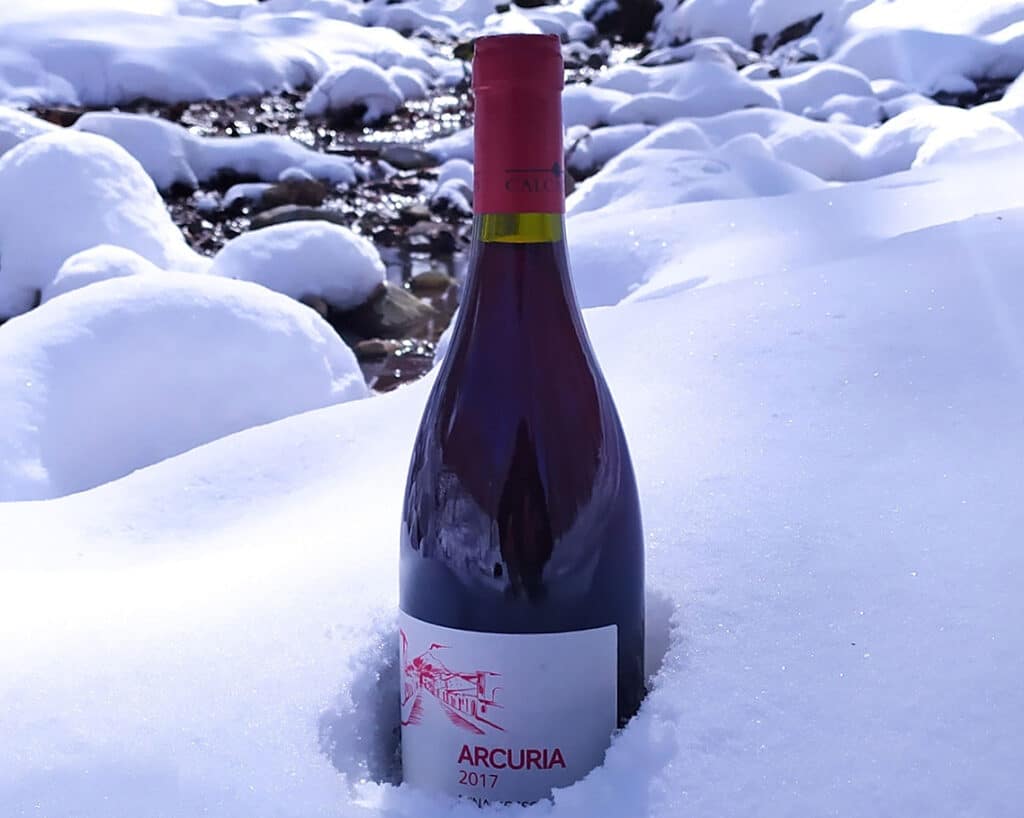
From the depths of the sea to the 2000 meters of snow-capped peaks, after all, the step is short: the extremes, as is known, always touch.
In addition to Elena Walch – whom we mentioned initially and who since 2011 has reserved at least 1200 bottles of each type for aging at high altitudes – Bruno Carpitella, creator of the Vini d'Altura project, is also to be considered a champion of this type of aging.
Bruno does not produce wine, rather he selects it - starting from an agreement with the winemakers - and brings it in autumn to 2000 meters, in the heart of the Gran Sasso National Park; up there the bottles are housed in mobile cellars – which he designed himself – throughout the winter, under the snow.
In this case, the microclimatic parameters, the purity of air and the interaction with a specific mineral substrate inevitably mark the wines and, in addition to accentuating their freshness, seem to give them typical and unique balsamic notes.
Last year, Cerasuolo, Montepulciano and Pecorino were followed by Nebbiolo, Marzemino, Morellino and Negramaro; as well as the Spumante d'Altura, also Rosé (...)
The transhumance of wine, from the Mediterranean to the snow of the Gran Sasso
Cna October 27, 2021

(translated by Google)
When we say magnetism, that force of attraction of an element, or of a place like this.
Bruno Carpitella and Lorena Lucidi, he from Rome, she originally from Abruzzo, from Montorio in the province of Teramo, that magnetism found a way to capture it and transform it into an experience: that of wine which, left to hibernate under the snow for an entire winter, when it sees the light again it is enriched with unique aromas.
Partners of the Pendeche company, Vini d'Altura, founded by them and a couple in life, Bruno and Lorena in 2019 participate in the Cambiamenti Award, the recognition of the innovative thinking of new Italian companies promoted by CNA, whose final, for the edition 2021, will be held on November 19 in Rome.
“Pendeche”, from the name of the old shops in the historic center, is the protagonist of CNA Storie di Ottobre. Everything was born for fun: when Bruno, as a boy, left a bottle of wine under the snow and the following year he came back to savor it.
"During the winter, these bottles undergo a process that allows them to transform into something else" explains Lorena. "Longevity is one of the characteristics that the aged wine takes on, as are the typical hints of the mountain: moss, limestone, even spring water".
It is the territory that gives the wine these characteristics: “the process takes place only in some specific areas of this mountain here” says Lorena, pointing to the Gran Sasso massif behind her.
"The tests were carried out in various mountains of Abruzzo and in the Alps. But the results were not the same" (...)

(translated by Google)
Many know the multiple benefits of cold and ice on the human body and skin. For some time, in fact, the application of ice on an area of the body for health purposes has been known as cold therapy or cryotherapy and it is common, especially in Northern Europe, the practice of bathing in ice water to tone and reinvigorate the sleeping body. of winter. The cold helps to repair the damage of time or associated with intense physical training. When you dive into ice-cold water, your blood vessels constrict to dilate when you step out. This process helps eliminate the body's metabolic wastes, especially in the lymph nodes: the increased blood flow floods the cells with nutrients and oxygen to help the body and mind.
And if this process were valid not only for the human being but for all living beings?
This is what Bruno Carpitella, creator of Vini d'Altura, and Arch. Lorena Lucidi, who introduced a unique and original way of refining the wines in bottle: "We select the wines with our partner companies and in the autumn we bring them to 2000 meters above sea level, in the heart of the Gran Sasso and Monti della Laga National Park, keeping the bottles in suitable mobile cellars designed by us, for the whole winter, under the snow." (...)
Refining wine at 2,000 meters: cold amplifies the flavours of the wine, which evolves without aging
Il Sole 24 Ore | How To Spend It December 9, 2020
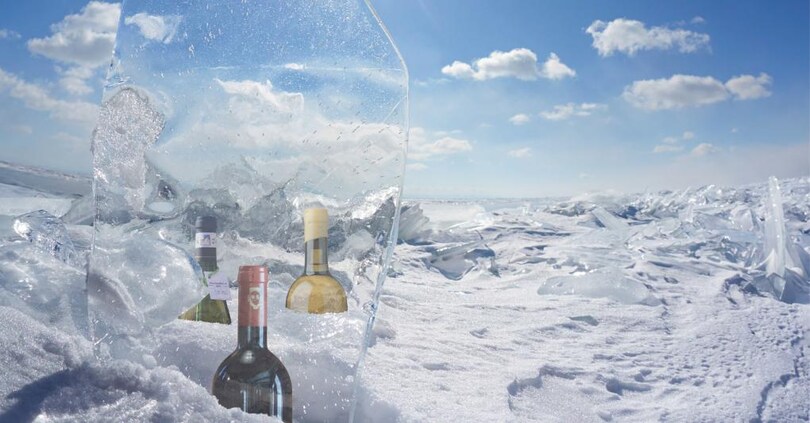
(translated by Google)
A harmonious, young and fresh taste: there are bottles stored for months in silver mines in the high mountains, in the snow or in alpine huts.
(...) In the Park until the melting of snow... Vini d'Altura was born to deal with aging: it does not produce wine, but chooses it and takes it every winter to 2.000 meters, in the Gran Sasso National Park, just before it starts snowing.
The area, inaccessible and secret (to access it, they obtained special permits from the Park and in the last stretch they carry the wines on their shoulders), ensures a peaceful aging to the bottles, stored in special wooden and iron containers which are then covered with snow until late spring.
A fascinating project, which saw the wines of Abruzzo: Cerasuolo, Montepulciano and Pecorino first climb to the top, followed by experiments with other Italian vines, Nebbiolo, Marzemino, Morellino and Negroamaro.
Soon it will also be tried with classic method bubbles. But what happens to the snow-covered bottles? "The typical scents of the vines are amplified, exalted, but thanks to the cold, the wine does not age: it maintains its freshness unaltered. At the time of thaw the rarefied air rich in minerals, due to a series of chemical reactions, penetrates the porosity of the cork and gives unique, balsamic nuances, just like a breath of mountain air", explains Bruno Carpitella, the creator of this refinement method on the summits.
With Vini d'Altura the aging is transhumant and tells about Italy
Virtù Quotidiane November 5, 2020

(translated by Google)
With a few hours before the first snowfall that whitens the peaks of the Gran Sasso d’Italia, Bruno Carpitella and Lorena Lucidi are carrying hundreds of bottles. At an altitude of two thousand meters, a thick blanket of snow soon covers the mobile cellars, which were specially made to accommodate wines, protecting them from the excesses of an extreme environment.
Thus begins a refinement process that lasts between 6 and 7 months, until the thaw which takes place in June.
The "Vini d’Altura" project started about 5 years ago. At that time there were just 36 bottles in aging and all of them from Teramo wineries. Today, the number of bottles is increasing (which will reach 2,400 next year), but also the variety of vines chosen and the geographical breadth.
The project, commissioned by the company Pendeche Srl of Montorio al Vomano (Teramo), "was born as a tool for promotion and territorial development, as it is all focused on local productions", Bruno Carpitella, expert mountain expert and author of this special intuition that extends to wine that typical process of aging at high altitude, already a reality for cheeses or cured meats.
“We continued by involving various companies from Teramo, choosing mostly Pecorino wines. Over time, we realized that this process guaranteed significant transformations on all the samples we brought to altitude. Over time, we have perfected the technique, creating structures to house the wines, we have understood what the best microclimatic conditions were and today we have passed from the experimental phase to actual production ".
In these wine refuges, two thousand meters high, in the heart of the Gran Sasso and Monti della Laga National Park, the temperature remains constantly below zero for at least six months, the humidity is 100 percent and the pressure is around 700 hectopascals. "The conditions in which refinement takes place - he continues - completely breaks the mold with respect to traditional techniques, giving life to a process that benefits wine".
"It often happens - Carpitella is keen to emphasize - that when we make blind tastings after aging, it is difficult for even the producer to recognize his wine".
The first change that you can touch with your hand in the Vini d’Altura is a rejuvenation of the wine itself. "The wines tasted after this refinement - highlights the creator - are lively wines, young even after many years. This rejuvenation is already visible from the color. Wines that start from amber or garnet nuances, typical of aged wines, return to youthful nuances. Differences that are clearly perceptible also from the organoleptic point of view ".
"The wines acquire characteristics deriving from the environment - continues Carpitella -. The area of the Gran Sasso where the aging takes place, in which limestone is present, is rich in iron and magnesium, which intervene on the transformation at an organoleptic level. In the wines, both limestone and mineral notes can be felt. On white wines this creates an effect of citrus acidity, while developing balsamic notes in reds. Our process does not upset the wine, but amplifies its initial characteristics, giving it breadth and elegance ”.
The Offshore Wines available to date have been made in partnership with two Abruzzo companies: Contesa di Collecorvino (Pescara), which has conferred a Cerasuolo d'Abruzzo Doc and a Montepulciano d'Abruzzo Doc Riserva Terre dei Vestini; while the Biagi company from Colonnella (Teramo), which has joined the initiative since the first year, has Trebbiano, Cerasuolo and Montepulciano d'Abruzzo Doc and also two Martinotti method sparkling wines in the catalog.
From autumn 2021 a Pecorino Igt Colli Aprutini Biagi will also be added to the catalog, while the Cioti company has chosen for the refinement a product vinified from a recently rediscovered grape, native to Abruzzo, on which ampelographic research is underway. "In this case, given the particularity of the vine, grown in the borders of the National Park, the project - underlines Carpitella - is conducted in collaboration with the Section of the Aquila del Cai".
The other wines destined for aging next winter come from Piedmont, Veneto, Tuscany and Puglia. For the first time, a Nebbiolo Doc Langhe from Marco Rabino, a Marzemino Doc Garda from Cantina Zatti, a Morellino di Scansano Docg from Pietramora and a Negroamaro Igp from Salento from Cantina Lizzano climb to the heights. Unlike many wines produced at high altitudes, examples of heroic viticulture, this refinement translates into a brand in all respects.
“We are focusing on the theme of wine transhumance. Once we have ascertained that the changes at the chemical-physical level are evident, we now want to expand the project on a national level ”. And in fact, precisely to emphasize the concept of wine transhumance, "capable of representing a synthesis of what Italy offers from an enological and environmental point of view" - concludes Carpitella - the Vini d’Altura will be called Transhumant ".
The undeniable charm of discovery: Abruzzo's Vini d'Altura
Deep Red Stories April 5, 2020

(translated by Google)
If the saying that goes: "behind a great man there is always a great woman" it can then be safely stated that: "behind a great wine there is always a great man and / or a great woman". We can talk about terroir, climate, vineyard etc ... but there will always be someone's hand, interpretation and intuition. When we talk about extreme wines we refer to the desire to experiment, the best known example to all is the "heroic" viticulture carried out in areas where the slopes make any operation in the vineyard difficult. In more particular cases, we tend to test how aging in particular environments affects the characteristics of the wine, just think of the sparkling wine bottles placed in the seabed or the barrels in the depths of a cave.
I met Bruno Carpitella and his partner Lorena Lucidi in 2012, at that time I was working in a club in the center of my city and although they lived in another region, they were regular and regular customers. Our passion for good food and good wine, in addition to making us great friends, has often led us to conduct long chats about it and it was during one of these that Bruno named the "Vini d’Altura". "You know - he said - it's been some time that every year, between October and November, before the great cold arrives, I transport some bottles of wine to the Apennine mountains, at an altitude of about 2000m. I let them rest under the snow for the whole winter and when the first heat arrives and the snow melts, I bring them back down ... you know what bombs they become!".
As a good sommelier, curious but wary, I told him that it seemed an interesting project but it seemed really strange to me that a wine could improve in such extreme conditions. He explained to me that this technique, perfected over the years, was inspired by a custom he had observed and taken up by some shepherds he met as a boy during a trek in the Abruzzo National Park. A few years passed before I decided to try one. The turning point comes thanks to the support of some companies from Abruzzo, led by the Biagi di Colonnella winery and the owner's enthusiasm, which make it possible to transform a simple personal experiment into a real entrepreneurial project and wine investigation. It was April 2017, we set off on a path in the mountains, the first and simplest of a long series; loaded the bottles provided by the cellars as a term of comparison, backpacks on our shoulders, we head to a mountain refuge where we found, under a thin layer of snow and ice, the bottles left the previous autumn.
Once seated at the table, the panel began: first the “canonical” wines, two still whites and a Charmat method. Passerina had "sat down" and embarked on her inexorable path towards old age; on the other hand, it is a wine not very suitable to be drunk after 2 years. The Pecorino, on the other hand, more structured and acidic, was rightly softened and developed a wider aromatic bouquet. As for the sparkling Trebbiano d'Abruzzo, not vintage, I found myself in front of a very pleasant bottle but in which no characteristic stood out in a particular way. We then moved on to the Altura version. The color of all the wines was already very different: crystalline, lively and basically greener. Once the glasses were brought to my nose, an expression of amazement was painted on my face, I looked around and the expression on the face of whoever made the wine was the same. The common thread was clear: this smoky sensation of wet rock was the forerunner to an explosion of floral, fruity and aromatic herbs in the two still whites. The sparkling wine instead proved to have thinned its perlage and a character that in some ways (Dionysus will punish me for this statement) reminded of a classic Pinot Noir method. In the mouth all three proved extremely dynamic, snappy and fresh on the tongue, with a textbook flavor and an extraordinary mineral return. Very long. Incredibly, the wines seemed rejuvenated on the palate, as if they had just come out of the cellar, with an extremely captivating aromatic bouquet.
From that moment the Vini d'Altura project, in addition to having demonstrated to all the participants of the various panels and subsequent tastings, to rest on solid scientific foundations - still under study - avails itself of the sponsorship of the Gran Sasso National Park (which houses the mobile cellars intended for aging) and this year has reached the production of about 2000 bottles. Currently, in addition to Abruzzo wines (Pecorino IGT, Trebbiano DOC, Cerasuolo DOC, Montepulciano DOC and Spumante Brut), which are already available for purchase, there is a selection of 70 wines tested, coming from 30 national wineries; the best products of the experimentation will make up the catalog Vini d'Altura of the following year.
One of the aspects of this project that fascinated me the most is how the process is done in a completely natural way. As Bruno Carpitella points out, the complex set of environmental conditions (temperature, atmospheric pressure, air purity, rarefaction of oxygen and, last but not least, direct contact with snow and limestone rocks), brings our attention to environmental issues, to dramatic consequences that climate change is causing in all aspects of our life. Not to mention how much the increase in average temperatures and precipitation patterns are irremediably changing the quality and taste of wine worldwide.
The Vini d’Altura are also an invitation to get closer and closer to a green and eco-sustainable philosophy.
P.S.
Like every year, the bottles at high altitude are not aware of what is happening down here, and it is incredible to think that they have not the slightest idea that at this time the rest of the world is in quarantine.
I met the magician who transforms wine under the snow of the Gran Sasso
Scatti di Gusto August 26, 2019
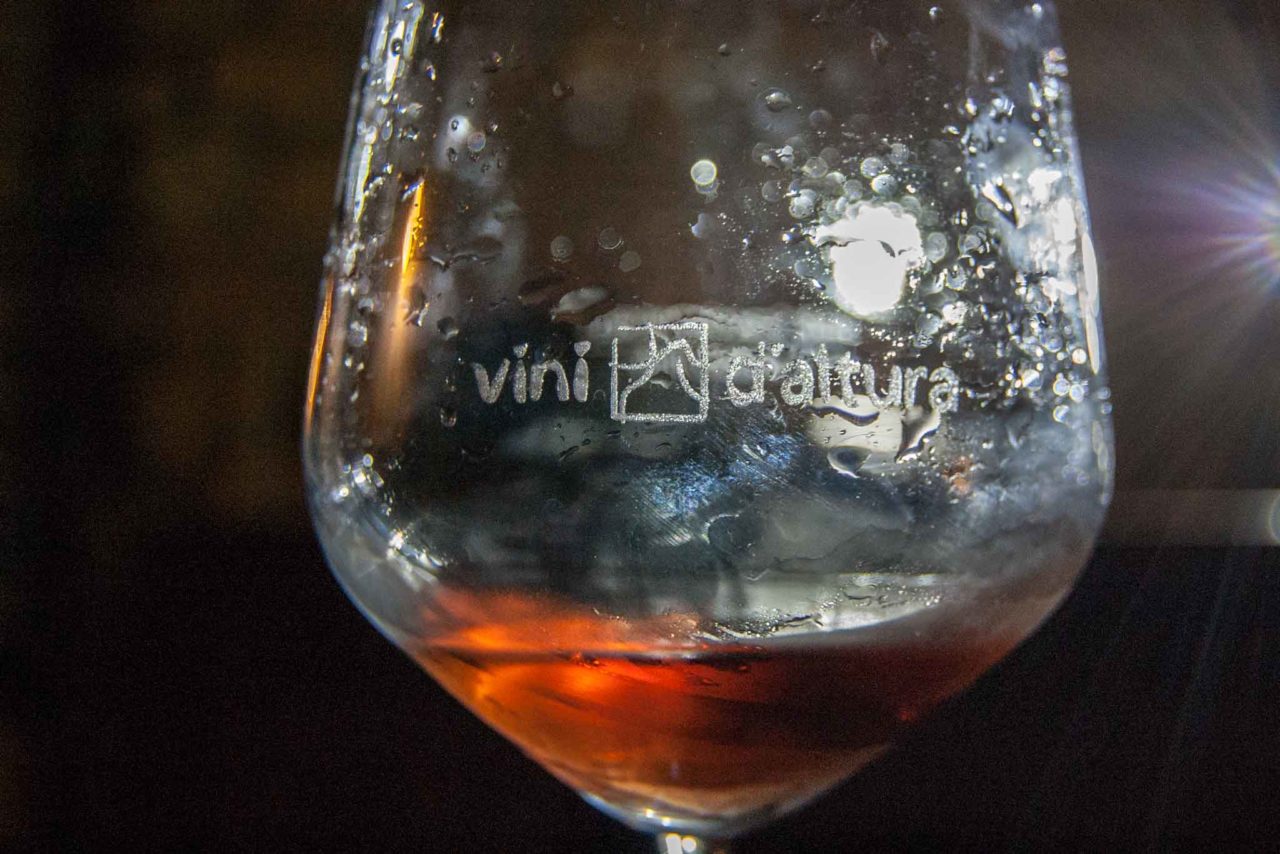
(translated by Google)
We are in Colledara, the small village that welcomes those who leave the Gran Sasso tunnel in the direction of Teramo. A little higher than the official 430 meters of the municipality, a stone farmhouse stands out, perched on a rock platform that directly overlooks the slopes of the giant of Abruzzo. It is the B&B opened a few years ago by Bruno Carpitella, Roman by birth but Abruzzese by adoption, who manages together with his partner Lorena Lucidi: it is called Scacciapensieri and it is not a random name.
The structure is very welcoming and offers a dream view, perfect for forgetting worries and stress. Fine mountain air, no disturbing noises, you move barefoot and there is no shortage of sauna and whirlpool. Even breakfast is à la carte, or rather "alla portata" Lorena explains to me, that is, when the guest sits down, the procession begins from the kitchen, with specialties based on freshly prepared garden products and selected ingredients.
But the Scacciapensieri, however seductive, serves to finance another much more ambitious and surprising dream: the Vini d’Altura project. Which does not indicate visions of heroic viticulture or unlikely icewines from the Apennines, but a process of aging in ice that literally transforms the wine, purchased already produced and bottled by third-party wineries.
Will it be yet another marketing operation? I thought there and then. But then Bruno tells me a story. He tells me about his passion for the mountains, about solo trips when he was a boy, to conquer the peaks of Lazio. And how by chance he found himself drinking wine left under the snow the previous year. Something had changed, the wine was more complex, more intense. Much better.
From here, the curiosity and experiments, many, which led to select a particular area of the Gran Sasso, at 2000 meters, in the heart of the National Park. Zone 1, the most protected, where no one enters. Except Bruno Carpitella and his bottles: “Before the first big snowfall, we arrange the bottles in our containers made of wood and metal, placed directly on the ground. Then the snow and ice cover everything up and hide it from view until it thaws, when we bring bottles and containers back downstream. We got permission from the Park Authority - he explains - because we respect all the parameters of non-interference with fauna, flora and landscape. These are areas with a particular composition of the soil, which works in synergy with the climate and the bottles, to guarantee incredible results. I did the same experiment in other areas of the Gran Sasso as on other very high mountains in the Alps, but without the same result ".
It's time to uncork, and my curiosity is skyrocketing. A Trebbiano produced by a well-known and serious local company is placed in front of me. It only takes a few minutes and an unexpected, intense explosion of yellow flowers, grapefruit, notes of hay and vegetables arrives, proposed to the nose with a verticality that is not exactly typical. The sip is no less intense, long and gratifying. The same goes for the Cerasuolo, from the same company, which even showed off hints of carnation that did not give way either to the morello cherry or to the small red berries, in a continuous and seductive dialogue. With Montepulciano, intense, rustic and full-bodied, the transformation is in finesse: different local company of origin, and a basic bottle that is transformed. All the typical hints enhanced and intensified, as for an aged version, with soft tannins but with an intact and vibrant freshness, which calls for a second sip (and even a third).
(...)
For now Bruno Carpitella produces a total of 2000 bottles with this method, but the idea is to reach a few tens of thousands. "At first, my dream was to create a sort of regional movement around high-altitude refinement. But I was unable to agree with local producers, who are fighting each other instead of teaming up ".
But perhaps it was a good thing, because Bruno's project abandoned the Abruzzo dream and aroused the interest of many important wineries, from the Alps to Pantelleria. "I am selecting wineries throughout Italy, and in the autumn I will bring bottles from various companies that are interested in the experiment to the top".
The bottles refined by Bruno Carpitella can be recognized by the Vini d’Altura label (which shows information on the production and bottling cellar) and by the characteristic lanyard (for climbing, of course). They can be purchased directly at the B&B or online, and cost a little more than the starting bottle, but not as much as one might suppose, ie from € 20 to € 50. In Rome you can taste them at Casa Bleve, in via del Teatro Valle.
Within a couple of years, based on the results obtained, a map of the wine aged "in Altura" will be created, in which North and South will be determined by the meridian that passes through the Gran Sasso d’Italia. And who knows that he won't finally get all Italians to agree.
Biagi and the new niche dedicated to the Vini d'Altura
Abruzzo Magazine May 29, 2019

(translated by Google)
Each edition of Vinitaly is made up of novelties, intuitions, products resulting from research and development. The brothers Luca and Fabrizio Biagi are well aware of this, who with their farm in Colonnella (Teramo) were able to amaze once again, to win over the many buyers and enthusiasts who came to Verona for the event.
They did so thanks to the collaboration born with Bruno Carpitella, director of the Pendeche company, which represents the initiative and the Vini d’Altura brand. The result of the partnership has resulted, for the moment, in a Pecorino Igt Colli Aprutini 2016 and in a Spumante Brut.
The great peculiarity of these niche productions is to be found in the aging at high altitude: bottles "sown" in autumn near the Franchetti, Duca degli Abruzzi and Fioretti refuges, between 1,500 and over 2,400 meters above sea level, left the entire winter , under the freezing cold and the snow, uncork in the summer. And the taste and smells that are then found in the glass and in the mouth are extraordinary, with a rich perlage, an impressive minerality and flavor.
Abruzzo discovers the high-altitude wines, a heritage of the shepherds
Il Centro June 11, 2017
(translated by Google)
Wines aged under water, in the depths of the sea, have become a must. But never before had anyone thought about aging white wines under the snow, at high altitudes.
Bruno Carpitella, entrepreneur of the Sicilian Valley and administrator of Pendeche Srl, which deals with the promotion of the territory, has thought of it, which has collected a cultural heritage handed down to him by the shepherds. And it has launched a project, which is called “Vini d'altura”: for the first time in the world it studies and promotes the aging of wines at high altitudes. Carpitella actually collected and canonized a custom limited to a group of shepherds.
«About thirty years ago, I was 18-19 years old, I saw some shepherds on the Gran Sasso trafficking under a rock: they took a bottle and put another in it. I went over and they invited me to drink the bottle that had spent the winter at high altitude. It was love at first sight. So they passed on to me the ritual, which I carried out but on a personal level ». Carpitella left the bottles in the autumn and went to pick them up in the spring.
Founded "Pendeche", the idea was to let others enjoy the properties of the white wine matured on the peaks of the Gran Sasso. «I said to myself: what are the most representative elements of this territory? They are mountains, wines and gastronomic products. And it came natural to organize something, making a kind of scientific ritual». Three wineries have been involved in the project for now: Tenuta Terraviva di Tortoreto, Vini Biagi di Colonnella and Cantine San Lorenzo di Castilenti. 36 bottles of white wine were brought to the heart of the Gran Sasso: to the Franchetti refuge (2,433 meters) and to the Duca degli Abruzzi (2,388 meters).
"The whole world of enology says that wines should be aged in the cellar at a constant temperature, otherwise they will be ruined. “Vini d'Altura” proves that this is simply not true. White wines in particular conditions, at a height of at least 2000 meters, with a very low atmospheric pressure - no more than 750 millibars - and at very low temperatures acquire very particular characteristics. During this first year we monitored in the weather stations of the shelters, external temperatures down to -34 ° C were recorded. However, the bottles do not undergo these thermal changes as they are protected from snow. We have now ascertained that this "magic" occurs due to a combination of environmental parameters that are impossible to reproduce artificially. Tasting our wines you will feel a crazy minerality: you will feel like you are in a cave full of snow ».
(translated by Google)
It all began in June 1987 when Bruno Carpitella, entrepreneur and passionate visitor to the mountains of Abruzzo, reached the summit of Monte Marsicano and met three shepherds engaged in the magical ritual of "bottles in the mountains": they took a bottle from the rocks to replace it with another carried in the backpack.
After years of pioneering experimentation, Carpitella decides to organize the first coordinated experience of aging at altitude of Abruzzo wines, in collaboration with Tenuta Terraviva di Tortoreto (Teramo), with Vini Biagi di Colonnella (Teramo) and with Cantine San Lorenzo di Castilenti (Teramo).
A selection of bottles was transported on foot to the heart of the Gran Sasso and placed near the Franchetti Refuge (2433m) and the Duca degli Abruzzi (2388m). Up there, during the winter months, from the first snowfall to the thaw period, contact with the air saturated with mineral molecules triggers a specific process of micro-oxygenation through the cork.
All these factors combine to give the wines an impressive minerality and flavor and a particular perlage to the sparkling wines. The gust-olfactory analysis of the samples examined highlighted the characteristics acquired at the end of the high-altitude maturation process.
Abruzzo, discovering Highland Wines in the Gran Sasso Refuges
Cityrumors June 5, 2017
(translated by Google)
Three appointments, from 11 June to 12 August, to taste Abruzzo wines matured at high altitudes, crowning excursions with the Compagnia delle Guide in the shelters of Gran Sasso, the Duca degli Abruzzi and the Franchetti.
In this way it will be possible to share the first world-wide experience of aging wines under extreme climatic conditions, with exposure to very low temperatures and pressures.
After years of pioneering experimentation, Carpitella decides to organize the first coordinated experience of high-altitude aging of Abruzzo wines, in collaboration with Tenuta Terraviva di Tortoreto, with Vini Biagi di Colonnella and Cantine San Lorenzo di Castilenti.
In the scenario offered by the two refuges, the bottles will be opened with the presence of sommeliers and partner wineries for three tastings of Highland Wines and excellent gastronomy from Teramo and Abruzzo.
The appointments are on 11 June at 11:30 at the Duca degli Abruzzi Refuge with Tenuta Terraviva; on 2 July at 11:30 am at the Franchetti Refuge with Vini Biagi and on 12 August at 5.30 pm again at the Duca degli Abruzzi Refuge with Cantine San Lorenzo.
Our project
Our products
Follow us

©2023 Pendeche Srl | Vini d’Altura®
All rights reserved
Vini d’Altura® and Transumante® registered trademarks of Pendeche Srl
Contrada Torrito 26 | 64046 Montorio al Vomano (Te) | Abruzzo, Italy
N. Rea TE-167332 | P.Iva 01958370676
info@pendeche.com | +39 334.9461156



